Photographs: Sondeep Shankar/ Saab Press Colonel John Taylor (retd)
1962 will not be allowed to happen again.
Take the word of an old war veteran for it, says Colonel John Taylor (retd), even as there is talk that China may strike at India this year and try to grab some territory.
The visit to India by China's special representative on the boundary negotiations, State Councilor Dai Bingguo, in January raised a lot of hope and expectations on both sides; as he has made a strong call for both countries to put aside their differences and seize 'a golden period to grow China-India relations.'
If the two Asian giants are able to solve their differences, it will indeed change the economical, political and military scenario in the entire South East.
However the sincerity of the present Chinese regime remains questionable .The 'Principles of Panchsheel' that had been burning bright in the 1950s, got doused in the 1960s and from time to time are rekindled occasionally.
Though China is once again concentrating on rebuilding her armed forces (befitting of a superpower), yet she realises that India is a regional economic power to reckon with and that its armed forces are no 'pushovers'.
During my 30 years of service, I have come face to face with the Chinese army on four different occasions.
Firstly, in Ladakh (1970-1971), in the Partapur Sector, which houses the Siachen Glacier and the Karakoram Pass. Secondly in NEFA, Arunachal Pradesh (1973-1974). The third time, as a battalion commander in Sikkim (1980-1981), holding positions astride the Younghusband route, and for the fourth time as deputy commander of a brigade in Katau, North Sikkim (1988-1991).
Please ...
While walking to Chungtash, we had to cross the river Shyok 63 times!
Image: The river Shyok meanders on to join the Indus and on into PakistanPhotographs: Courtesy, Colonel John Taylor (retd)
In recent times, a number of reports have appeared in the media about 'Chinese intrusions' into Indian territory. Many may not believe this, but these so-called intrusions have been going on since a very long time! By personal experience, I first saw it in 1970!
I was posted in Chungtash (meaning 'Big Stone' in Yarkandi) which lies below the Karakoram Pass and connects Daulat Beg Oldi (DBO) with Leh. It is an ancient route used by traders from Yarkand and Tashkand, who traded gold for Indian silk and spices.
Daulat Beg was a very wealthy merchant whose grave still exists and lies in DBO (means the place where Daulat Beg was buried). As one treks from Panamik (famous for its hot Sulphur springs) towards Chungtash, one has to traverse through a valley flanked on either sides by large mountains.
The River Shyok meanders along on its journey to join the river Indus and on into Pakistan. While walking to Chungtash, we had to cross the river Shyok 63 times (during our march of 23 full days)!! The waters are ice cold and if adequate precautions are not taken, frost bite is an immediate reality.
After climbing and gaining altitude, suddenly we arrived onto a vast flat plain -- a complete contrast to the steep mountains we had been negotiating the past so many days! The flat terrain extended to as far as our eyes could see.
There were no landmarks whatsoever. Its vastness was however interspersed at regular intervals with remains of camels, yaks and other beasts used by traders' caravans.
There was no need to do any map reading now. We just followed the piles of animal skeletons and we knew that we were on the correct route.
Please ...
An abandoned IAF helicopter was a grim reminder of the 1962 war
Image: The abandoned IAF chopperPhotographs: Courtesy, Colonel John Taylor (retd)
In this same area we also saw a lone, abandoned IAF helicopter which was a grim reminder of the 1962 war. Today India has built an 'advanced landing ground' in this location.
It was here that I saw the famous Kasturi Mrig(musk deer) for the very first time. Unlike the border with Pakistan, there are no boundary pillars to mark the International Border between India and Tibet (now China).
As our patrol approached it, the musk deer trotted away to the Chinese side (just outside of our rifle range), turned around and looked at us as if to say, 'Catch me if you can!'
It would immediately change loyalties when a Chinese patrol would appear and run towards our Indian side and play safe! It was also here that I first saw a Chinese soldier.
As a young officer with just about six years of service, I was provided with a detailed map on which the boundary had been marked along with Chinese troop deployments (there were just a few). The map did not have just one boundary. It had many:
a. The McMohan Line (prepared by and named after the first British Surveyor General of India).
b. The Tibetan Boundary (as per documents left by the British army).
c.The 1962 Indo-Chinese Dispute Line.
d.The Indian Claim Line.
e.The Chinese Claim Line
In all fairness to the Chinese army, they came till only the areas they claimed as theirs. The Chinese army is not unpredictable like the Pakistani army. There are no 'ceasefire violations'. That doesn't help matters because the Indian Army has to protect its borders in the interest of the country.
Please ...
'Even God has been kind to the Chinese. Their part of the terrain is less hostile'
Image: Hostile high altitude terrainPhotographs: Colonel John Taylor (retd)
In Jammu and Kashmir, Pakistan has already gifted vast areas to China. This has enabled China to build roads, airfields and allied infrastructure. China can maintain its troops by road.
Even God has been kind to them. Their part of the terrain is less hostile and more conducive to construction of infrastructure.
The terrain on our side of Tibet is more treacherous, difficult to negotiate and the weather is very hostile. This obviously gives rise to many disadvantages.
In many areas of Ladakh, our troops are still maintained by air and it is not possible to build the required infrastructures. Bad weather can disrupt the best of plans. Sometimes one feels that the weather is the bigger villain than the enemy!
In NEFA (Arunachal Pradesh) the Chinese claim that their territory is till Tawang. In 1962 they marched till Bomdilla and went back. We have very well fortified defences here and a well rehearsed withdrawal plan which ensures the enemy will be given a bloody nose.
The Chinese only keep making noises and patrol the area (sometimes into remote parts of Indian territory), but return on seeing the Indian Army's presence. A lot of flag meetings at the highest levels take place here.
Please ...
'There were repeated requests for the Bappi Lahiri hit, Jimmy Jimmy, Aaja Aaja, Aaja!'
Image: Nathu La is one place where the India and China positions are in close proximityPhotographs: Courtesy, Colonel John Taylor (retd)
In Sikkim there are many positions where we are in close proximity to the Chinese troops. Nathu La is one such place. Tourists come here to witness the weekly exchange of 'Dak'. Traders also go across and a fair amount of trading is done via this route.
Chinese soldiers love Indian cigarettes. Whenever the 'political commissar' was not present or not looking, the Chinese soldiers would ask for cigarettes. In the 1970s and 1980s the Panama brand of cigarettes was an all time favourite.
They also enjoyed listening to Indian film songs (which were played over the loud speaker) and there were repeated requests for the famous Bappi Lahiri hit, Jimmy Jimmy, Aaja Aaja, Aaja!
Positions are well demarcated in Sikkim, and there is no chance of any major or minor intrusion. Tibetans seeking asylum are not uncommon. At one stage, China used to claim the whole of Sikkim as theirs.
After many rounds of talks and concessions made on both sides, matters were settled and they no longer make such claims.
Talking about intrusions, I will recount a rather embarrassing Indian intrusion in Sikkim, sometime in the early 1980s which made headlines in the media. Both India and China would patrol the border on their respective sides. This was nick named as 'Billi (cat) Patrol.'
Each patrol would walk along the well demarcated border, fully armed and in full strength (20 to 30 soldiers).
The weather in this part of Sikkim has a strange, almost weird pattern. The skies are clear at night. Later a misty fog comes creeping up from the base of the mountains, shrouding visibility to such an extent that by morning you cannot see beyond 5 to 10 yards.
On very few occasions do we have clear weather during the daytime. As soon as noon approaches, from 12:00 pm till 04:00 pm as per a daily schedule, it begins to thunder and flashes of lightning light up the skies in jagged patterns. The noise is frightening.
Nobody moves out at this time. Lightning has claimed many a life, both human and animals. Sometimes the mist and fog persists for days!
Please ...
The Indian soldiers had taken a wrong turn and landed in Chinese territory!
Image: Setting up tents for a night haltPhotographs: Courtesy, Colonel John Taylor (retd)
On one such occasion an Indian Army patrol was out on a routine patrol and found the going tough because of the fog. When the fog lifted after a few days, they realised they were lost, and asked for help over the radio.
They followed the instructions, "Continue for 3 kms till you reach a lake. Follow the track down for another 2 kms till you come to a school building. Spend the night there and vehicles will pick you up by 08:00 am."
The very relieved patrol followed the instructions. They came to the lake, found the school. It was late at night, totally exhausted, they fell asleep.
Early in the morning, they were rudely awakened. They were surrounded by Chinese soldiers! While negotiating the fog they had taken some wrong turn and had landed in Chinese territory!
The terrain is very similar on both sides. The yak herdsmen are also similar. After hectic diplomatic negotiations our soldiers were returned.
Intrusions can sometimes be by accident, and sometimes deliberate!
Please ...
1962 will not be allowed to happen again
Image: Planting the flag at the Karakoram PassPhotographs: Courtesy, Colonel John Taylor (retd)
It is heartening to hear that on January 17, 2012, India and China have agreed to set up a working mechanism to deal with important border issues to ensure peace along their borders.
Today the electronic and print media are proactive and are always 'Breaking News'. There are a lot of implications and complications when they report and talk about border intrusion.
Whipping up emotions doesn't help. Escalating the situation helps neither side.
The Indian Army swears by the doctrine, 'Not an inch of Indian soil will be given to the enemy'. The Indian Army knows its job and how to do it.
All it needs is an order -- and nobody, just nobody will get away with even the slightest intrusion.
The latest acquisition of sophisticated aircraft and other military hardware will also go a long way in keeping any enemy at bay, both physically and psychologically.
Always remember, that the Indian Army has a glorious tradition of bravery and valour, even when the chips are stacked against it. It will not allow any neighbour to change that. We are well prepared and ready.
1962 will not be allowed to happen again. Take the word of an old war veteran for it.
Colonel John Taylor (retd) fought in the 1965 India-Pakistan War and the 1971 India-Pakistan War. He was part of the Indian Peace Keeping Force in Sri Lanka in the late 1980s. He served the Indian Army for 30 years.

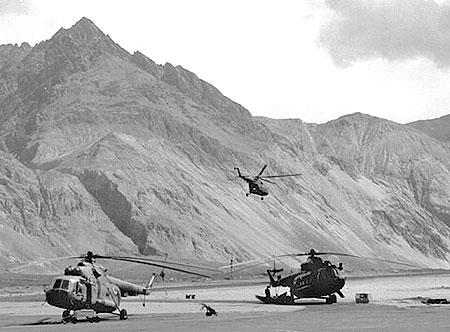
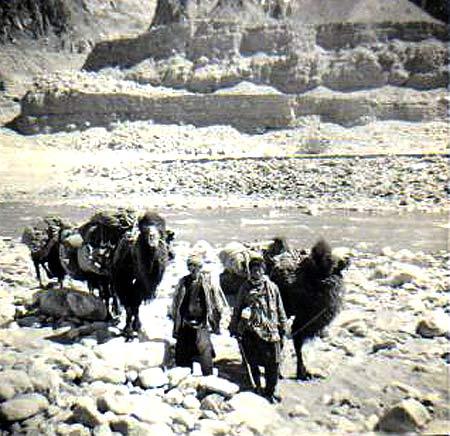
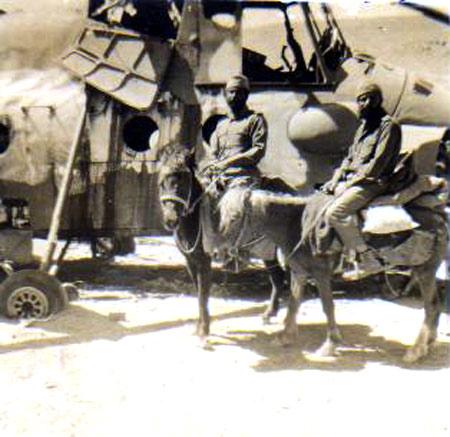
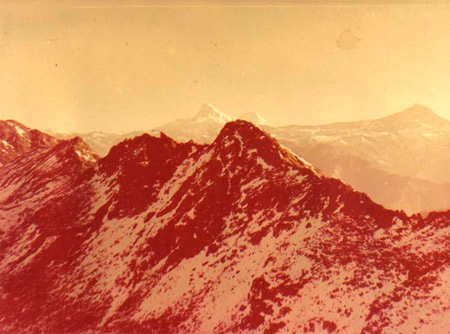
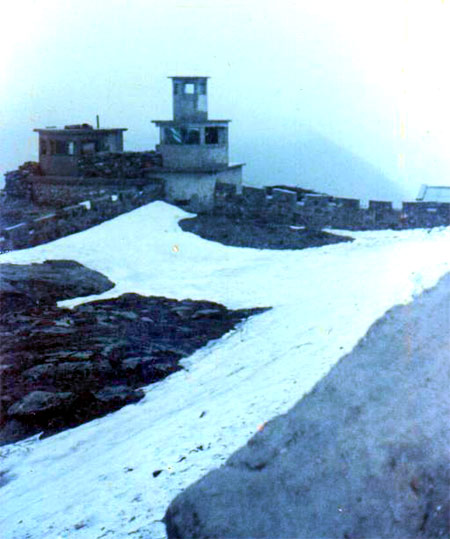
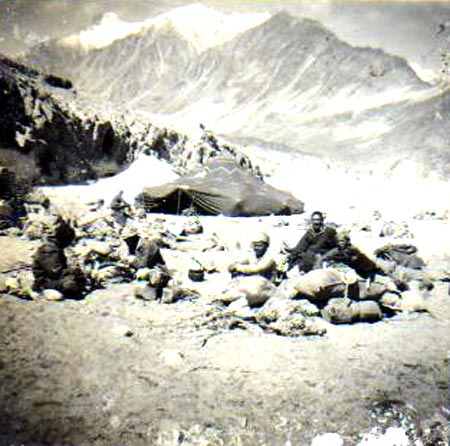

article